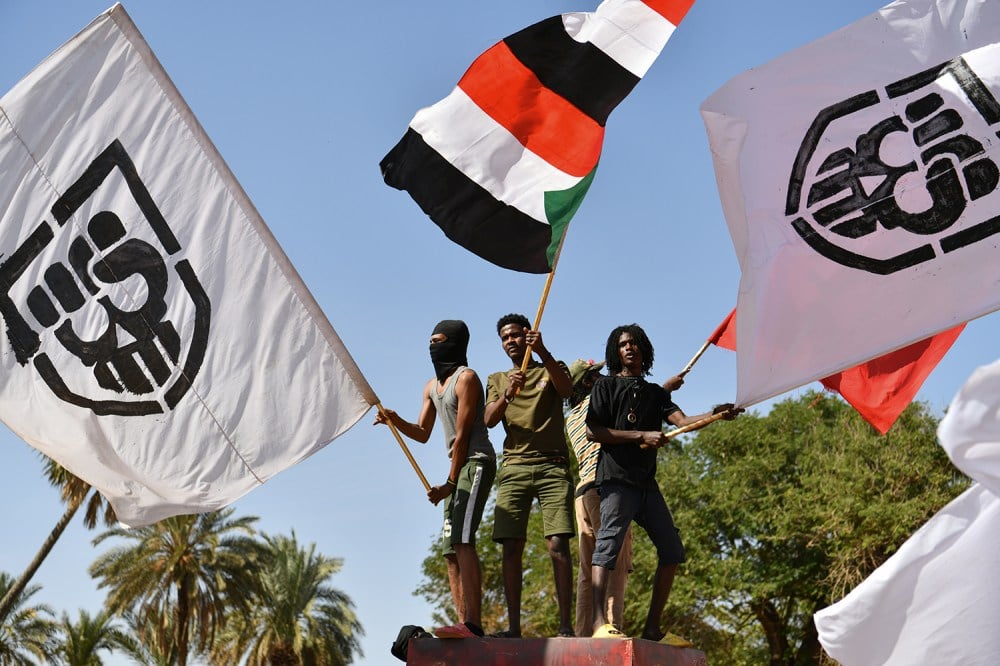Sudanese Refugees Face an Uncertain Future in Cairo Amid Ongoing Conflict
CAIRO, Egypt—From the top floor of an apartment building overlooking Cairo’s lively Faisal district, Hassan, a 24-year-old Sudanese refugee, raised his phone to reveal a haunting photograph: scars marred his friend’s back. This image was a stark reminder of the ordeal both had endured just weeks earlier, when mid-October forced Hassan to flee his home in Omdurman, Sudan.
Hassan’s journey began when the paramilitary Rapid Support Forces (RSF) detained him and his friend. The reason? They lived near a site where three RSF soldiers had been killed. Over two days, they suffered brutal torture among dozens of other detainees, until a compassionate soldier freed them. His torment left behind, Hassan crossed into Egypt through a smuggling route as his friend remained, unable to muster enough funds to escape. "His condition is very bad, but they haven’t got the money to leave," Hassan lamented.
The Sudanese conflict has plunged countless civilians into hardship, with economic collapse, rampant looting, and armed robberies tearing at the fabric of society. Despite these adversities, relentless fighting, a shattered healthcare system, and a looming famine have already driven over 7 million people to seek refuge within and beyond Sudan’s borders. By the end of January, reports indicated that approximately 450,000 Sudanese had escaped to neighboring Egypt. Yet here, as in so many places, they face dire economic straits, limited aid from international bodies, and scant opportunities for employment and integration within Cairo. Displaced and largely ignored by the global community, these refugees remain in limbo.
Before hostilities engulfed Khartoum, it served as a refuge for many fleeing conflicts from neighboring regions, including Ethiopia’s Tigray war and Eritrean military conscription. However, the capital and adjacent cities like Omdurman have now become perilous for even ordinary civilians. “The situation has become out of control,” Hassan explained. “There are civilians carrying arms. If clashes occur during the night and soldiers get killed, more of their troops return in the morning to detain the people living in the area.”
In Cairo, Hassan moved into his father’s modest apartment, who had been living there for three years for medical treatment. As conditions in Sudan decayed, more family members joined them, crammed into the two-bedroom flat. Among them were two of Hassan’s uncles, survivors of RSF torture.
Another harrowing tale is that of Qasim, a 47-year-old father who had worked as a taxi driver in Khartoum. After one night’s attempted dinner run for his children, he returned to find Sudanese Army soldiers threatening his daughter. Qasim was blindfolded, tied, and subjected to 31 days of severe torture in a makeshift prison. “The citizens are the victims of both sides,” he concluded after yet another detention by the RSF following his release.
The lives left behind carry with them fragments of what once was. Salah Abdelhay, a 65-year-old artist and retired professor, managed to salvage some of his precious artwork as he fled Sudan. Now residing in a modest Cairo apartment, he finds solace in the pieces he brought. “My artwork is about culture,” he said, revealing paintings that weave the rich tapestry of Sudanese identity. "They can simply destroy these things with ease," he remarked, saddened by the impunity of the warring factions who lack appreciation for culture and art.
The conflict has also disillusioned many who had been active in civil society movements aimed at establishing civilian governance in Sudan. Twenty-four-year-old Omdahab Omer, once a spirited student and activist, now feels her identity fragmented. “When the revolution started and we headed out [to protest], we were dreaming of building a good country for ourselves, a safe country, one that is independent and gives us all our freedoms,” she recalled from a Cairo café. Her education interrupted by the war, Omer now seeks scholarships to continue her degree in development studies.
As the humanitarian crisis deepens, the resources available to Sudanese refugees in Egypt remain alarmingly insufficient. The United Nations recently appealed for $4.1 billion to meet the urgent needs of those affected by the conflict. With inflation soaring, many newcomers face challenges in securing affordable housing, resulting in overcrowded living conditions.
Cairo’s existing Sudanese community, numbering an estimated 4 million before the war, has become a crucial support network. In the bustling Boulaq district, the Hopes for the Future initiative, led by Amal Rahal Bouda, has become a sanctuary offering community, education, and support to refugees. Bouda’s initiative, pivoted during the crisis to house refugees temporarily, continues to run workshops and skill-building programs for women and children, fostering a sense of community amid adversity.
Despite these efforts, long-term solutions for integration and support are essential. Bouda voiced concerns about the mental health of Sudanese children traumatized by war, now wary of loud noises, and inclined to hide due to their fears.
As the crisis in Sudan unfolds, the prospects of refugees returning home appear bleak. Nearly 18 million Sudanese face acute food insecurity, and hostilities are expanding to even the country’s breadbasket regions. “I do want to return,” Abdelhay reflected, “but what I hear from my children is that no one is thinking about going back again. They are all thinking about moving forward.”
Source: Foreign Policy, “Sudanese refugees in Egypt struggle as needs outstrip assistance,” March 4, 2024.
